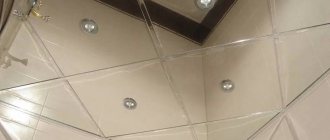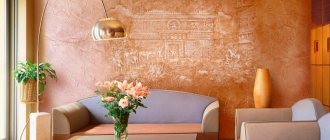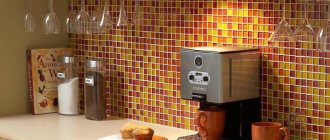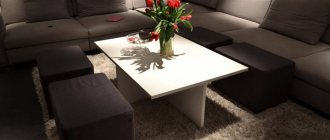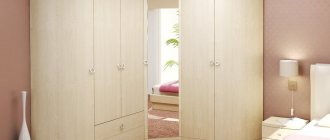Various modern materials are used for finishing the inside and outside of a residential building. One of the high-quality cladding options is the use of decorative stone tiles. This is a technological material that perfectly imitates natural texture. It is manufactured using high temperatures, so it later becomes a stable material with high strength characteristics.
Advantages of stone tiles
Stone tiles are a reliable and functional building material that emphasizes the beauty of the room. In addition, as designers note, stone design is considered a trend. Therefore, decorative tiles are in demand.
Natural stone is durable. In the interior, this material looks natural due to its natural origin. However, natural stone is not cheap, which is why it is usually found on the outside of buildings or in rich and sophisticated interiors.
So that people could use stone decoration in their home environment, an analogue of rock was invented - decorative stone tiles. It costs less than natural material, but does not lose to it in beauty and luxury.
In addition, stone tiles are versatile, durable and practical. It has many varieties that will transform any environment and add luxury and elegance to it.
Another advantage of stone tiles is that they do not absorb moisture, so they are easy to care for. This also includes the following advantages of this building material:
- It is durable, which means it will retain its original appearance for a long time.
- Easily tolerates high humidity.
- It has a clearly defined texture that hides external defects: scratches, cracks. Dust is also not visible on it.
- It is resistant to chemical attack, and therefore special products can be used when caring for stone tiles.
- The material is almost weightless. This allows the building material to be used for wall coverings.
- Health safety and environmental friendliness.
What are the disadvantages of decorative tiles?
Decorative stone tiles have the following disadvantages:
- Due to its relief and thickness, it is difficult to combine with other decorative elements. Because of this, it is necessary to select materials that have a similar structure.
- A wall finished with stone often does not match with some surfaces. Therefore, when decorating the interior, this must be taken into account.
- It belongs to cold building materials, which is why it is rarely used to cover residential premises. And if they do cover it, it’s paired with a warm floor.
- If it has a fine texture, then the material quickly becomes dirty, so it requires careful care.
- To cut it, you will need additional tools.
Colors
The color schemes of the tiles are varied and completely imitate the elements of nature. Moreover, the double technology of coloring the relief base leads to the fact that there are no two identical tiles. The color of the veins and protuberances will always vary. The choice of shade depends on the style and personal preferences of the designer, but still, when using this material, you should rely on the natural palette. It is customary to classify decorative tiles by color depending on the type of stone that is imitated. The following types are distinguished:
- marble imitation involves the use of white, black and beige with a slight splash of gray;
- malachite tiles should be dark green with some streaks;
- onyx will be presented in pink, amber and light green colors;
- gray and beige shades are suitable for decorative sandstone;
- artificial slate has a brown, gray-green tint with light veins;
- a mixture of stones involves the use of natural shades (brown, white, reddish, etc.).
Ceramics
It is used in almost all rooms, which is why it is extremely popular. The material is durable and resistant to temperature changes. It can serve for more than 50 years. Also, ceramics are inexpensive, but high quality. It is used to decorate paths, gazebos, and terraces.
This also includes tiled models, which are also ceramics. They can be embossed or smooth, and come in a wide range of colors and patterns. The tile imitates a wide variety of relief elements, ranging from unevenness to veins. In addition, there are tiled models on which a smooth transition of colors is visible.
Gypsum
Stone-look gypsum tiles are sensitive to temperature changes because they are made from gypsum mixed with polymers. But despite this, it is environmentally friendly and does not harm health.
Warm rooms are finished with gypsum tiles. Gypsum is also a natural building material that is easy to process.
Gypsum tiles are also quite thin, which means they can be perfectly combined with different coatings. In addition, the material is able to regulate the humidity in the room: when the room is dry, gypsum releases moisture and vice versa.
Note!
Floor tiles | Examples of using expensive and inexpensive floor tiles in interior designWood-look tiles: see here the most successful solutions for using wood-look tiles in different interiors
- Tile design - exclusive options and ideas | See the latest and most fashionable solutions here!
It is important to remember that gypsum tiles are sensitive to loads. Therefore, it is rarely used to cover the floor. This building material is most often used to decorate walls.
Laying
The entire process of laying artificial stone is divided into the following stages:
- First, the old coating is dismantled. If you plan to decorate the entire wall or ceiling, then the covering is removed completely. Otherwise, only part is removed.
- Then the walls are leveled, since the stone must be laid on a smooth surface. Cracks are puttied, and large differences and slopes are sanded.
- After sanding comes the priming stage. Before this, the surface should be cleaned of dust and other dirt. Only after this the area is treated with a primer (preferably acrylic).
- The tiles have uneven edges, so they need to be assembled like a puzzle on the floor using a meter. Identical fragments should be in contact with larger and smaller ones.
- Then you should prepare the glue (it should be thick and uniform without lumps) and proceed with the installation itself, paying special attention to the corner joints.
- After laying the tiles, you should wait from 3 to 10 days, depending on the type of adhesive and the characteristics of the room. Only after this period will the tile adhesive finally dry, and the structure itself will become durable.
Interesting design ideas
Decorative stone-look tiles come in a wide variety of sizes and shapes. Therefore, it will fit harmoniously into any home environment.
Interesting design proposals:
To create contrast in the interior, you can use stone tiles with an unusual texture.
Decorative tiles that imitate antiquity will look great in a classic interior. This style looks unusual, as if the stone is many years old and has lost its shape.
Tiles in the style of torn stone will add a highlight to your home decor. It consists of irregularly shaped natural rock plates. Another unusual solution is to use rubble - pieces of stone. This is a rather bold and original design solution.
Decorative tiles imitating wild stone will look good in a rustic or country style. It imitates natural rock, which will add additional luxury to the room.
Each design is special in its own way, which is why it is selected individually in each case. If the choice seems difficult and it is not clear what to choose, it is recommended to consult a professional designer. It will help you decide on the choice of stone-look tiles for interior decoration. Or he will select the necessary building materials for the facade. The designer will not only take into account the client’s wishes, but will also show and comment on photos of stone-look tiles, which will make the choice easier.
Kinds
The construction market offers tiles for both interior and exterior decoration. For cladding facades, it is necessary to choose durable and strong materials that can withstand heavy loads and aggressive environmental influences, while maintaining the external decoration. Potential buyers are provided with several types of stone-look tiles.
Ceramic, clinker and other materials
1) Ceramic tiles are a natural material , but not stone, but fired clay . Ceramics have a smooth texture, they are strong and durable (can last more than 50 years), resistant to temperature changes, it is difficult for tiles to cause mechanical damage, they are harmoniously combined with other facing materials.
The condition of the coating is not affected in any way by exposure to moisture and steam , so it is an excellent choice for finishing the floor. A variety of ceramic tiles are tiled models, which are smooth and textured, with a wide range of patterns and colors. The tiles are easy to clean, so they are great for the kitchen, where there is usually the most dirt.
Ceramic facing tiles Torn stone. Pechnik Photos
The tiles are affordable, so they are used to decorate various rooms : living room, bathroom, hallway. It is used for finishing paths, gazebos, and terraces. Stone-like ceramics are also notable for the presence of other varieties:
1.1) The basis of porcelain tiles is several components: clay, feldspar, minerals, coloring pigments. The main characteristics are reliability and durability . Has zero moisture absorption coefficient . Characterized by the absence of microcracks . Withstands temperature changes. It is so durable that the coating can last up to a hundred years. Porcelain tiles are ideal for floor finishing.
1.2) The chemical composition of clinker tiles allows them to be used in regions with harsh climatic conditions. The special composition (porcelain clay is used as a raw material) and the technology of pressing, molding and firing provide products with unique characteristics . In addition to frost resistance, tiles also have other positive properties : strength, attractive appearance, long service life, resistance to ultraviolet rays, and environmental safety.
Clinker tiles Cerrad Aragon brown-beige. Photo by Leroy Merlin
The main disadvantage is the high cost. The cost of the material is an order of magnitude higher than that of conventional ceramic tiles. But long-term operation pays off the costs. Clinker tiles imitate brickwork, are used for interior and exterior decoration, and are suitable for tiling any room, even for decorating a bathroom. Fireplaces, baths and saunas are finished with clinker.
1.3) Cotto is made from red clay, thanks to which the tiles look natural in a home environment, a unique pattern . The finished products are distinguished by a richness of colors: from light yellow to brown, it is possible to find pink tiles on sale, as well as high surface roughness . Some manufacturers sand to give their products a smooth surface, while others increase the roughness. To reduce water resistance, porous products are treated with special protective compounds. They are produced in a wide variety of configurations: from regular round to complex.
Artificial gypsum stone in the form of tiles. Photo by Leroy Merlin
1.4) Initially, majolica was any product made of baked clay, covered with paints and glaze. But for the interior and exterior decoration of buildings, ceramic tiles made using the majolica technique are used. It has a relief surface and is distinguished by unique color transitions and ornate patterns. The main difference between this type and analogues is the brightness and uniqueness of appearance. As a result, the decoration can add a special touch to any room.
2) Gypsum tiles are a popular type of artificial materials, a high-quality imitation of natural rock. The tiles are made from a gypsum polymer mixture. Finished products are characterized by low resistance to frost and humidity. Therefore, it is recommended to use the material only for interior decoration. Light, thin and environmentally friendly gypsum-based tiles are easy to process and can be perfectly combined with different coatings.
3) The conglomerate is distinguished by strength and hardness. The tiles consist mainly of natural stone, so the products successfully imitate natural rocks. Conglomerate tiles are used for interior and exterior decoration, walls and floors.
Floor and more
The purpose is indicated in the markings - symbols. The variety can be identified by number or color : 1, 2, 3 or 1st grade - blue, 2 - red, 3 - green. A batch of 1st grade may contain up to 5% of defective products, 2nd - from 5 to 25%, 3rd - more than 25%. Other basic notations are discussed in the video.
During the selection process, you need to pay attention to additional symbols:
The footprint of a shoe demonstrates the purpose of the products for the floor, the palm - for the walls. The universal tile has no markings. Products of the first type are less slippery to ensure safe movement, while the second type is more decorative.
Snowflake demonstrates resistance to low temperatures and frost resistance. Such products can be used for finishing unheated rooms: balconies and loggias, as well as performing street work when decorating external walls, basements, porches, terraces, etc.
Flames with the numbers “1” or “2” indicate the number of firings; a product fired twice has greater strength than a product fired once.
The flask demonstrates resistance to chemically aggressive agents. The coating is not afraid of strong household chemicals.
A mosaic with cells of different colors demonstrates that a batch can contain products of different shades.
Two stripes at the bottom and one at the top demonstrate flexural strength.
The letters "PEI" demonstrate resistance to abrasion and wear . There are five categories of products:
- PEI I - for rooms with low traffic in a gentle mode or for walls.
- PEI II - for rooms with low traffic - living rooms.
- PEI III - for rooms with average traffic, for the floors of apartments and offices.
- PEI IV - for premises with medium-high traffic.
- PEI V - for areas with high traffic: shopping centers, airports.
Manufacturers indicate the place of application:
- airplane - for airports;
- cross - for hospitals;
- building with a pipe - for factories;
- bed - for hotels;
- Olympic rings - sports complexes.
Imitation of natural rocks
Natural stone tiles are in particularly high demand. These products allow you to create a coating that is no different from rock cladding, and at the same time save a lot.
Marble is one of the most common natural materials, which is why imitation is in demand. Marble tiles are a modern material, ideal for finishing walls and floors in almost any room . Designers have developed a wide range of options in different colors , but the most popular are white, beige, gray and black.
White marble products embody sophistication and luxury, allowing you to visually expand the space and fill it with light. Universal white tiles are suitable for interiors in both modern and classic styles. Beige brings a feeling of warmth and comfort to the interior, creating a relaxing atmosphere. It is very practical and fits harmoniously into the interior of any style. The color does not weigh down the space, so it is suitable for decorating rooms of any size. Recommended for use in plain rooms or as a background for bright elements.
Gray marble tiles are the most popular, practical, and especially good for minimalist and classic interiors. Black marble-like tiles look amazing, transform the room, the presence of pronounced veins allows you to install products in small rooms.
Onyx is a stone of varied colors. Therefore, imitation is available in various colors : white, blue, pink, greenish, amber. On sale there are ceramic and porcelain tiles with onyx effect . When comparing both natural stone and its imitation, it is important to note one important point. Onyx tiles do not have the translucency for which the rock is highly valued. It is used for finishing walls and floors and perfectly complements the interiors of the bathroom and living room.
Slate tiles have natural colors: gray, brown, beige, reddish, as well as an uneven, “torn” texture. This decor is suitable for facade work and is used for interior decoration of residential and commercial premises. Slate-like porcelain tiles have a rough surface, making them excellent for flooring. Gypsum slate tiles have a textured surface and are used for wall decoration in the living room, hallway, and bedroom.
Limestone and sandstone tiles are available in gray and beige tones, perfect for country-style rooms.
A popular decorative material is brick-like tiles , which can be combined with other types of finishes. Tiles imitating old brick are used when performing restoration work and when decorating interiors in a retro style . Tiles are used for full and partial wall finishing . The material is used as the main covering when decorating the bathroom and corridor. Fragmentary decoration, for example, of one wall, is applicable in the bedroom. Depending on the material of manufacture, ceramic, clinker, concrete and gypsum tiles are distinguished.
Brick tiles. Photo by Leroy Merlin
Torn stone tiles , which are products of irregular shape, add a zest to the interior An unusual solution is rubble stone tiles.
Other types of facing slabs
1) With or without relief. Tiles without relief are a separate variety. It does not convey the texture of the stone; the emphasis here is on color. Those. This is an ordinary tile, the pattern on which is similar to stone. The drawing visually resembles the surface of natural stone, but does not imitate the relief. Relief tiles are intended to replace natural stone, not to display a design. It imitates natural rocks to the greatest extent.
2) Colors . The color palette of products is diverse. Manufacturers prefer to produce products in natural tones and color combinations, for example, beige + sand + brown; gray+white; gray + beige, etc. The colors of individual tile options are difficult to determine, since they imitate natural rock, which has original textures and tones.
Ceramic tiles with relief. Pechnik Photos
3) Form . In addition to standard rectangular tiles, it is possible to find products with a square configuration on sale.
4) Sizes are relative. Each manufacturer adheres to its own standards related to the characteristics of the raw materials. But in general, the tiles are quite compact in size, especially in comparison with panels.
5) Type . There are regular and corner tiles. The second is designed specifically for facing corners.
How not to make a mistake when choosing stone tiles
When choosing a stone-look tile yourself, you need to look at its properties and proceed from the room for which it will be used.
Stone-effect tiles for the bathroom and hallway should not allow moisture to pass through, and should be strong, durable and reliable. If you are choosing stone tiles for a room where the load on the floor will be large, it is recommended to give preference to natural or porcelain stoneware models.
It is important to know that plasterboard models are a decorative material. They are not used for flooring or wall finishing.
Manufacturers
The construction market offers products from various enterprises. But when choosing, it is recommended to pay attention to materials from well-known manufacturers. Products from Spanish and Italian companies have an impeccable reputation. Kerama Marazzi offers a skilful imitation of smooth stones. Monte Alba offers gypsum products for interior use. Kacavaga produces various types of tiles. Canyon products - environmentally friendly facade tiles. Intkam produces gypsum products imitating wild stone. Keramin offers matte materials for interior decoration in various colors.
What care is needed for stone tiles?
You need to start caring for stone tiles immediately after laying them. The coating should be cleaned and the seams sanded. There is no need to use sharp objects to remove difficult stains, otherwise there is a risk of scratching the tile and ruining its appearance.
In the future, you need to use special products to care for the tiles. They must be carefully selected for a specific type of coating. It is worth remembering that drywall should not be wet; it must be cleaned with a brush or vacuum cleaner.
Installation process
Doing the installation yourself is not too difficult. Carrying out the work yourself will also save money. To obtain a high-quality, durable and reliable coating, you must follow some recommendations:
- It is necessary to inspect the purchased tiles for chips and color uniformity.
- The base must be strong and prepared : dirt is removed, cracks and irregularities are removed, the surface is leveled with putty and primed.
- Laying is carried out in the direction from the corner.
- According to various experts, the adhesive solution can be applied only to the base, only to the facing material, or to both surfaces. Manufacturers provide installation recommendations, you need to follow them.
- The gaps are rubbed with a special product, to which it is recommended to add coloring pigments to match the coating.
The process of laying gypsum tiles is clearly presented in the following video.
How to make stone tiles yourself
It is quite possible to make stone-look tiles with your own hands, but this process is labor-intensive and time-consuming.
To make the material, you will have to purchase special kits, watch video tutorials and, following the instructions, begin the process of creating stone tiles.
Decorative stone is a bold and unusual solution for the interior. Stone-effect floor tiles look elegant and luxurious. And the wall-mounted version adds zest to the home environment.


